The Color-Coded Draft
Last week’s post, I mentioned going to a weekend workshop with the fabulous Margie Lawson. We focused on adding Character Emotions, and part of that included her EDITs program. I promised to share what the pages looked like, so here you go:
I won’t go into detail about each aspect of the colors. Frankly, I couldn’t explain it nearly as well and it would be a disservice to try. To really learn this program, you have to take Margie’s class or download a packet. It’s not just what she teaches you, but the way she teaches it and the examples she uses to drive her message home.
But what I can tell you is that once I’ve highlighted according to what she taught us, I can look at a page now and know what it’s missing. Sometimes (rarely) it’s not missing anything. But the amazing thing about this is that fixing these pages is getting easier.
When I sat down this week to start highlighting the latter chapters in my historical (Yes, I decided it was worth it. I want the story to be the best it can be.), my husband watched in horror. He said just watching what I was doing made him shudder.
And then I explained it to him.
Suddenly, I could see him studying the pages in a different way, too. I picked up one page that was highlighted in a puddle of one color. (This is bad, by the way.) The first time I picked it up, I thought — but she’s locked in a room by herself. How can I change that? I tried to defend it. So when I told my hubby what this page represented, he asked how I could fix it.
And I was surprised at how easy it was to figure out how to do just that. What elements I needed to bring on the page, how easy it would be, actually, to fix that awful puddle-y page. Fixing that page now will take me about a half hour. Before taking Margie’s class, I could have stared at the page and rewritten it five times without truly understanding what I needed to change to make it stronger, more compelling. I have Margie to thank for that.
Now if any of you have every taken her class, you’ll likely recognize that there’s a color missing on most of these pages. Anyone guess what that is?
The color is orange — and you’ll have to tune in next Monday to discover what stopped me from putting it on my pages. 🙂

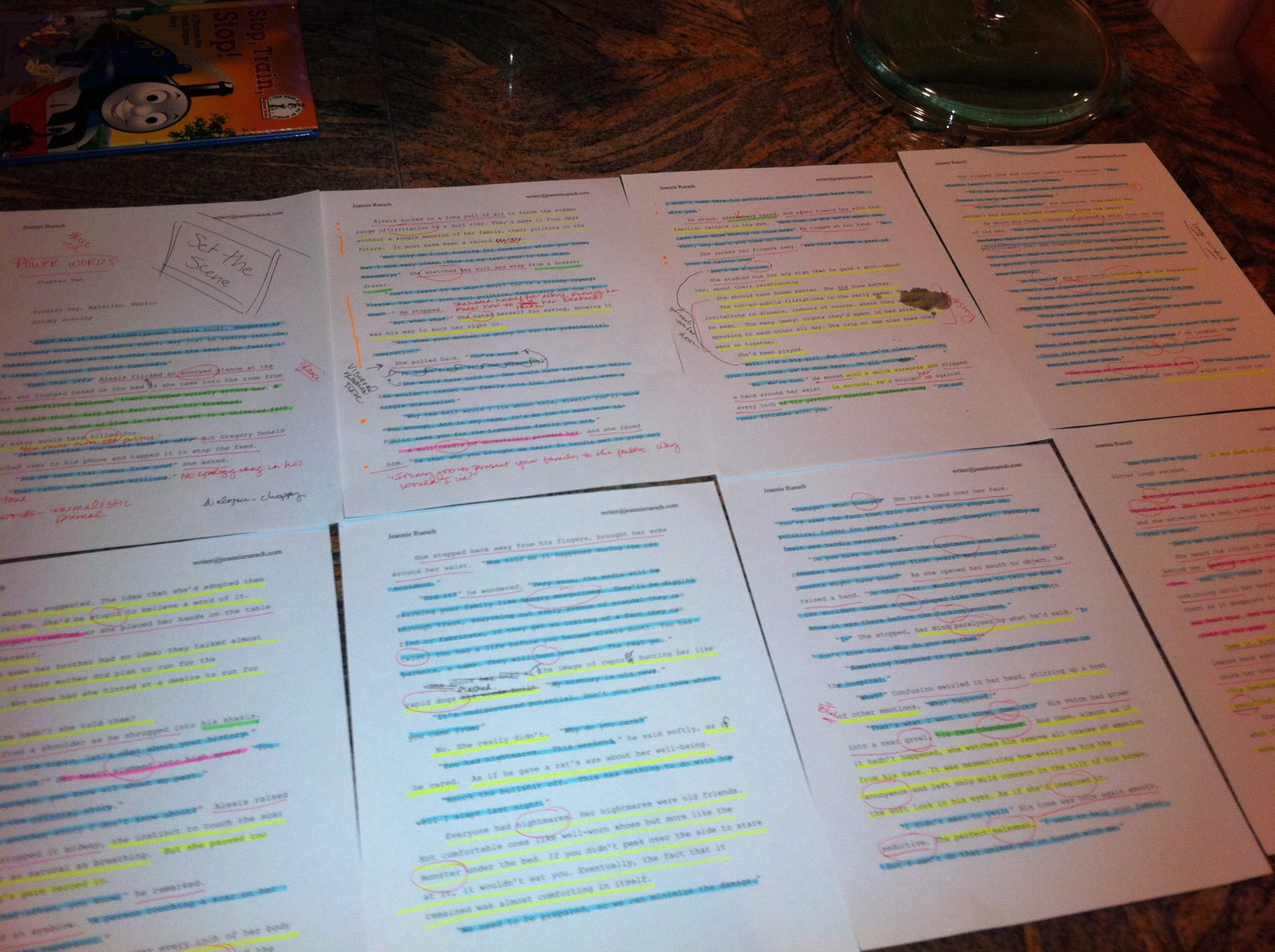

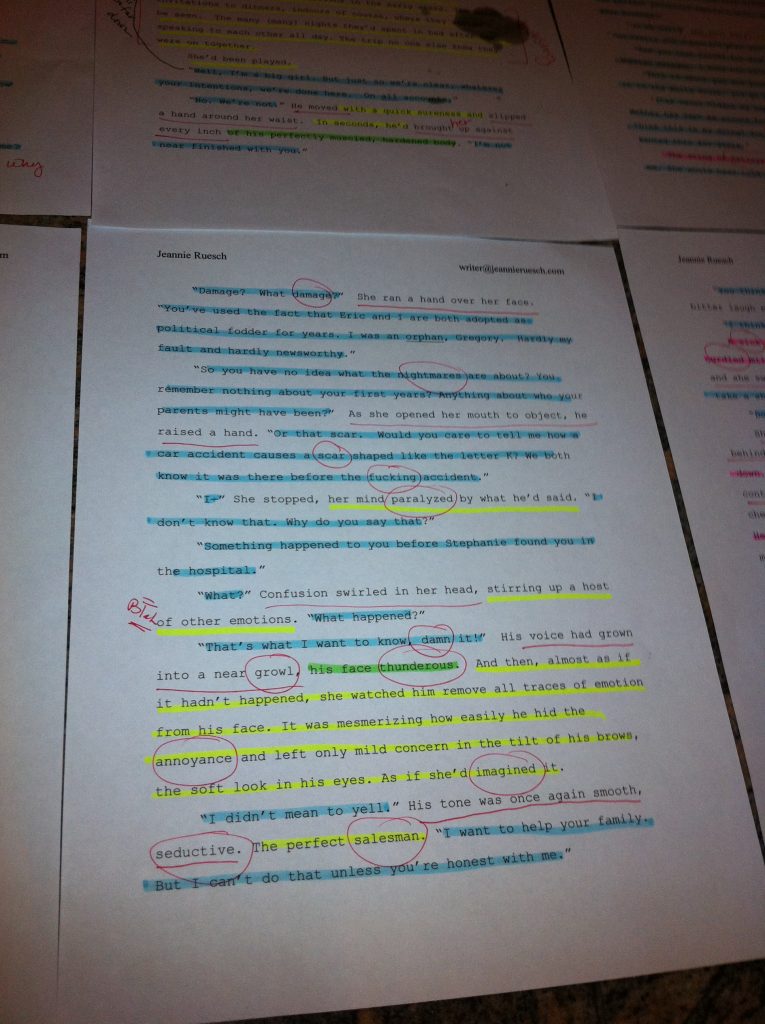
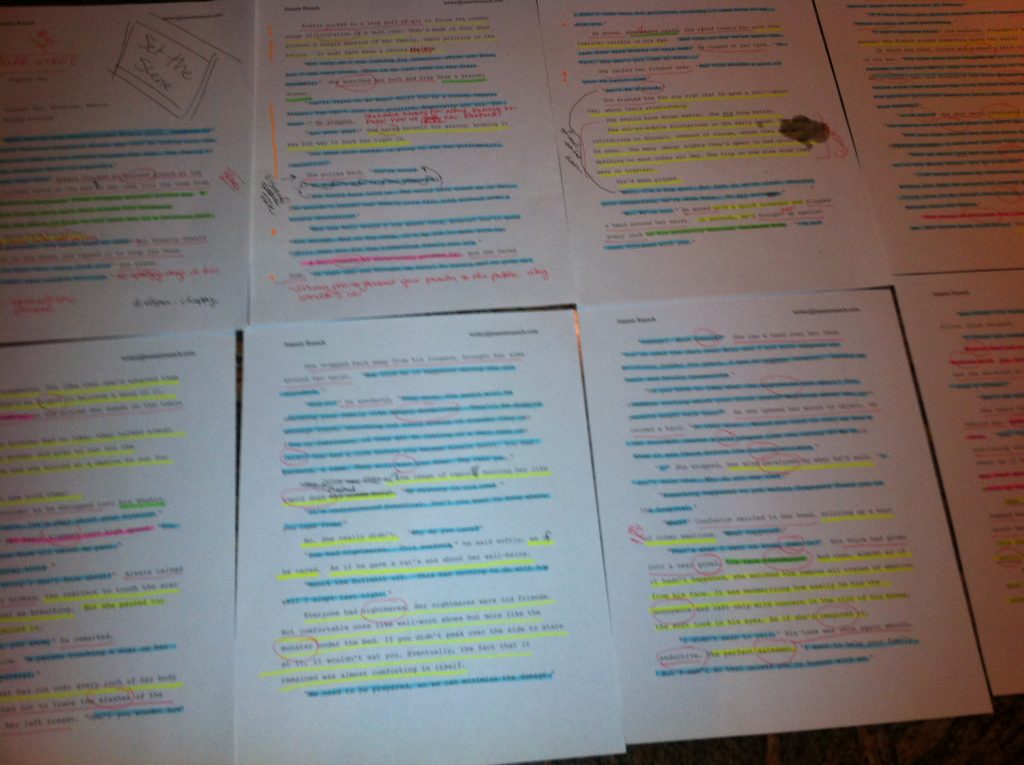
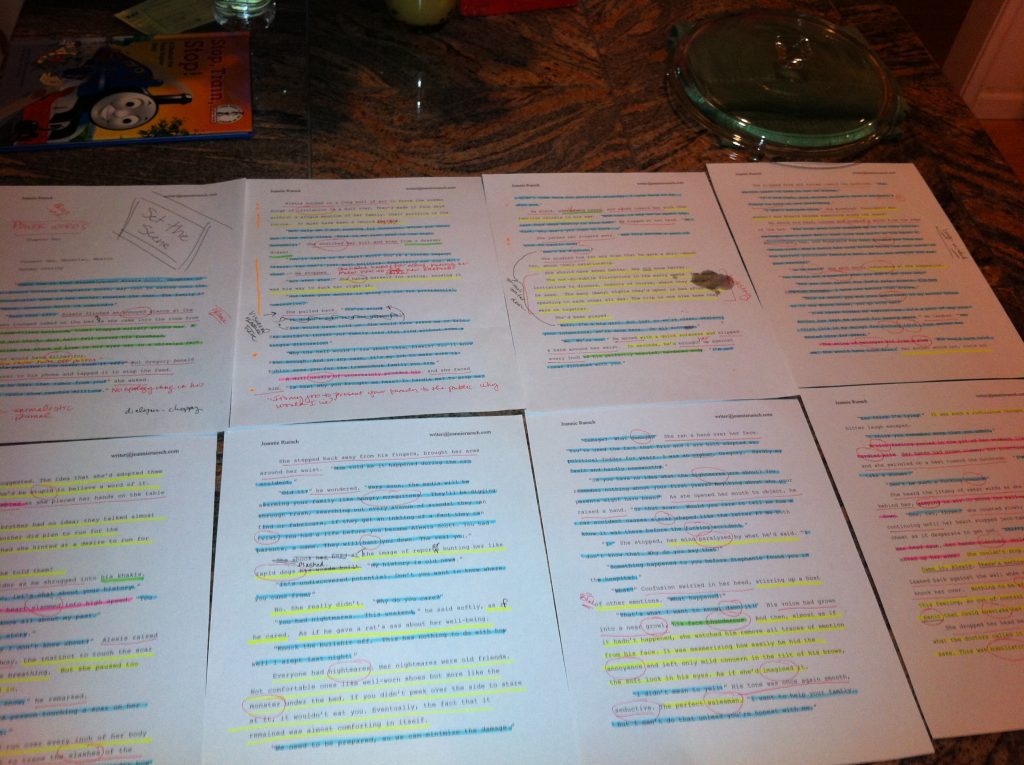
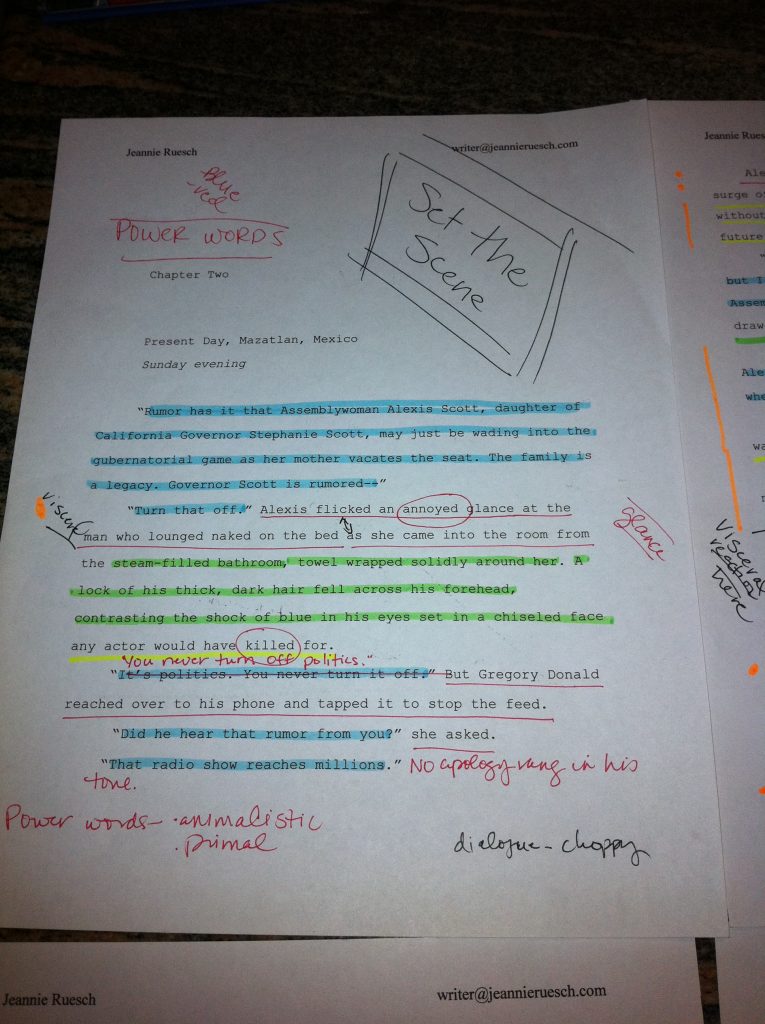
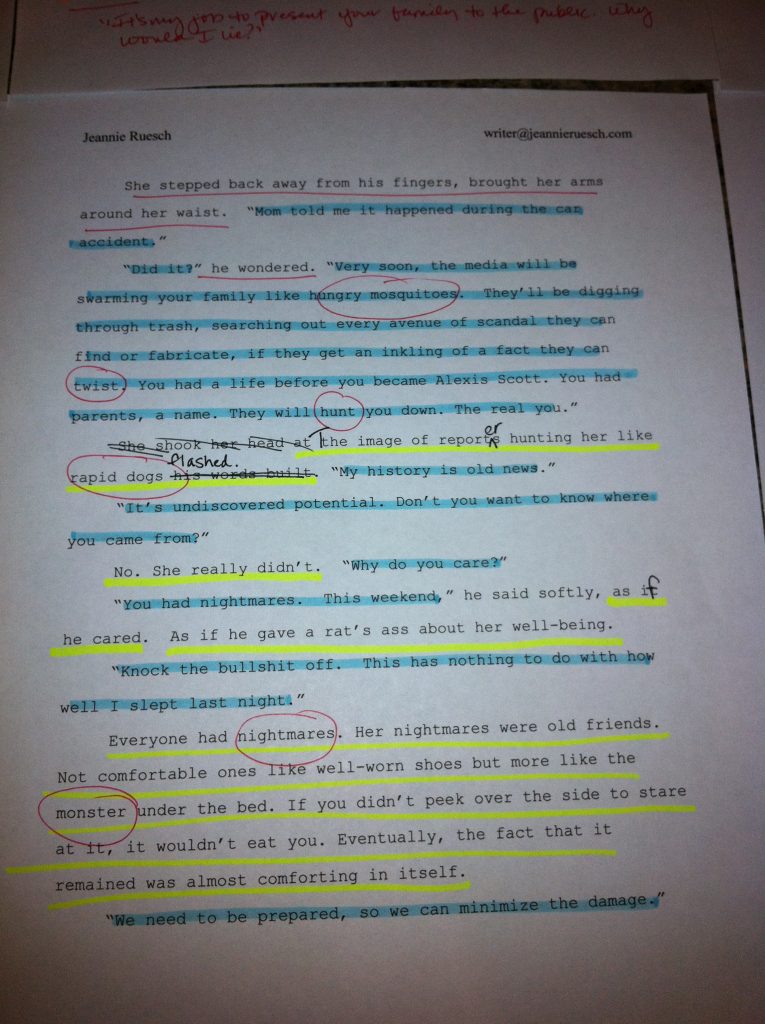

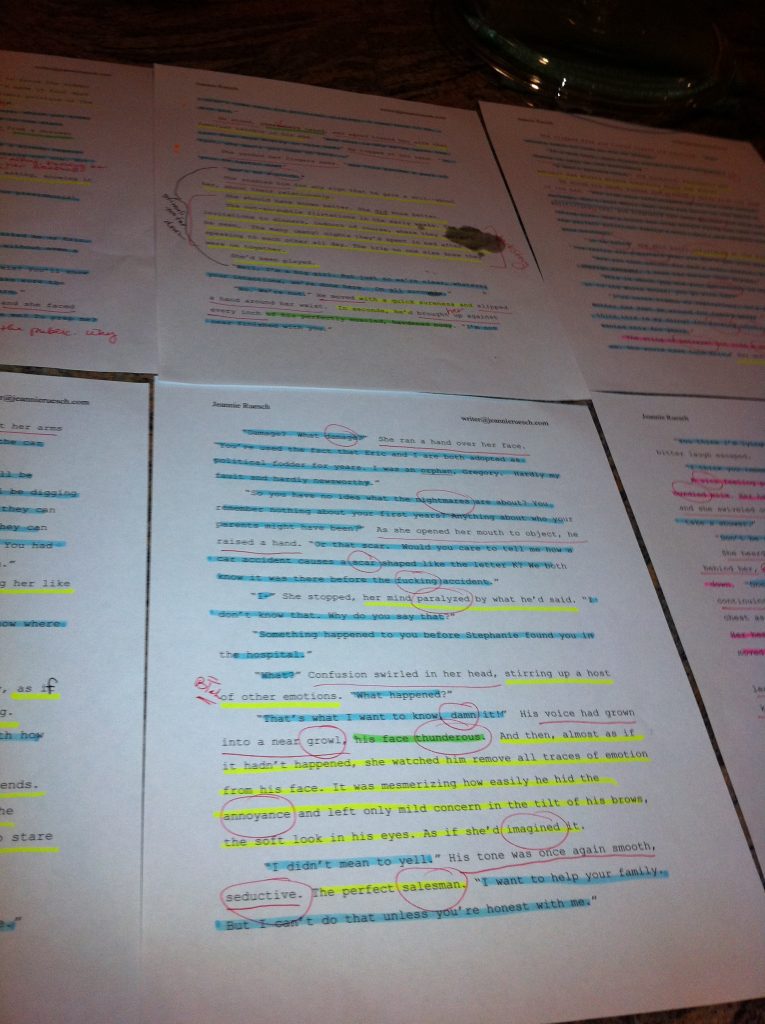
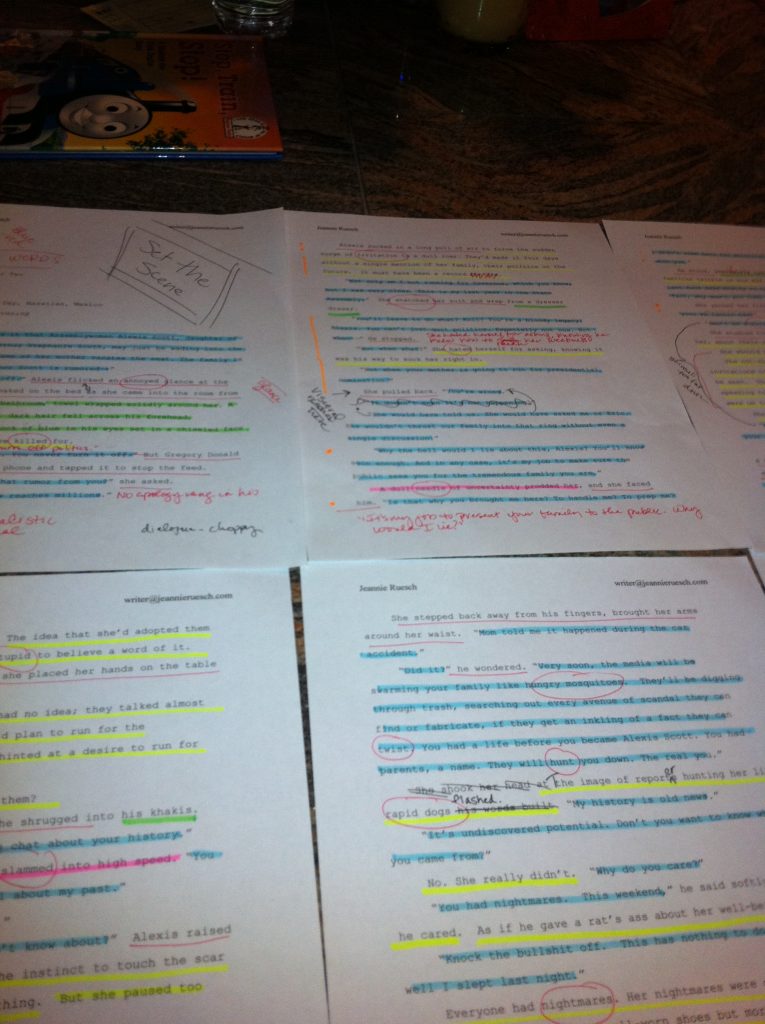

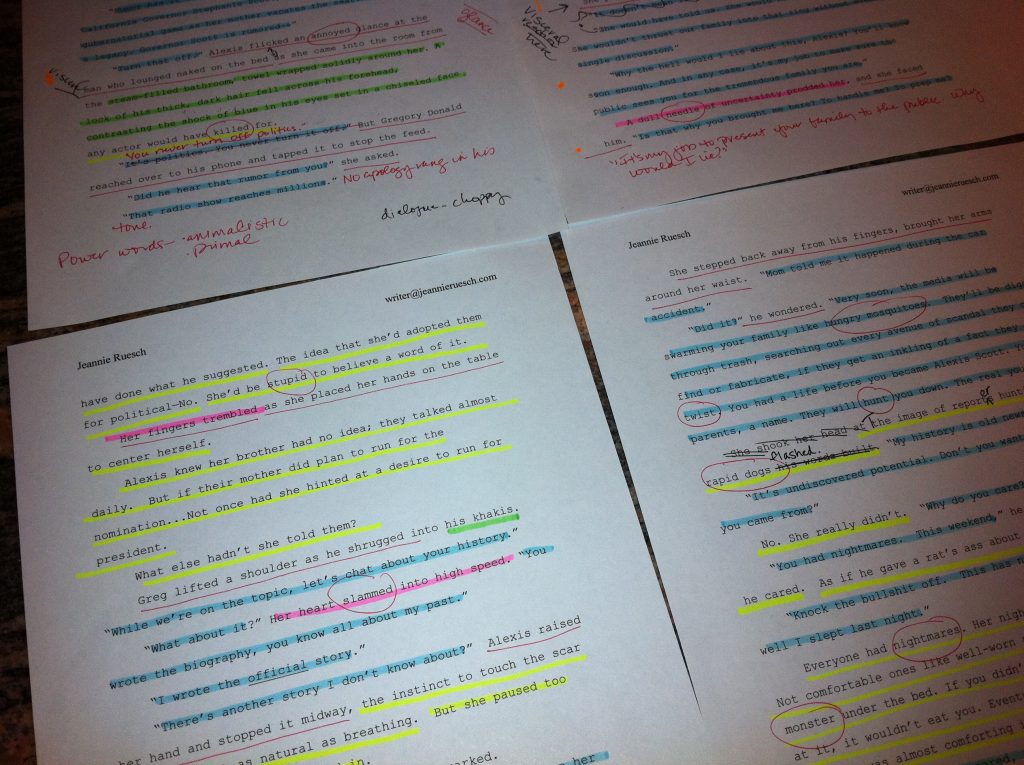
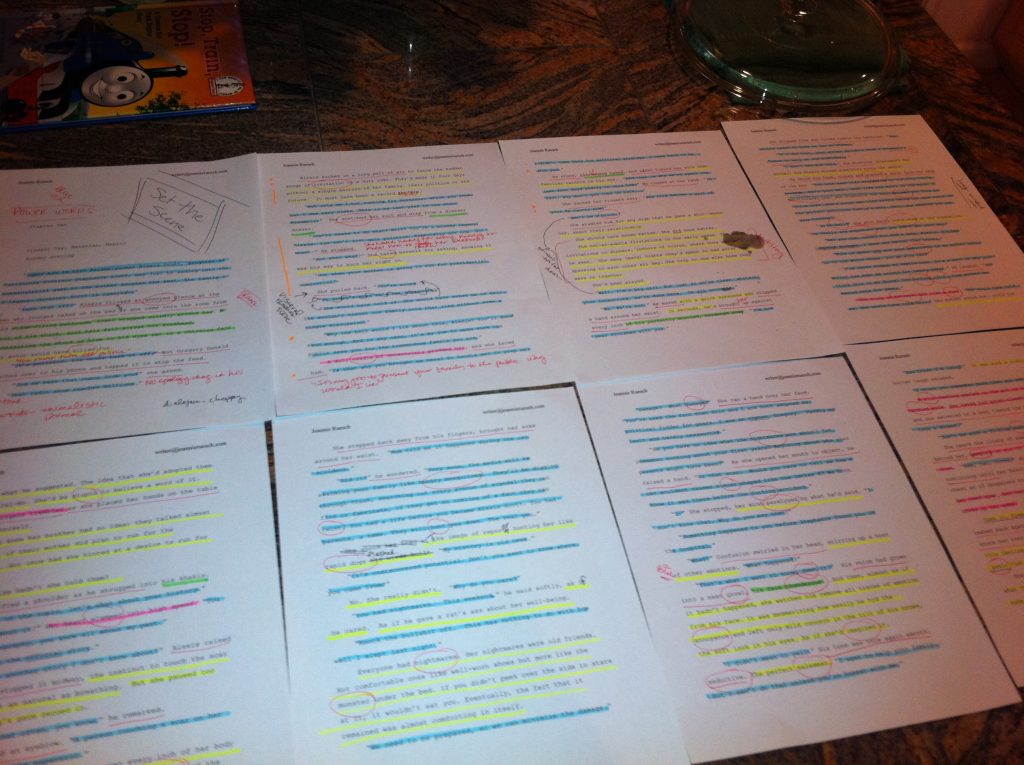

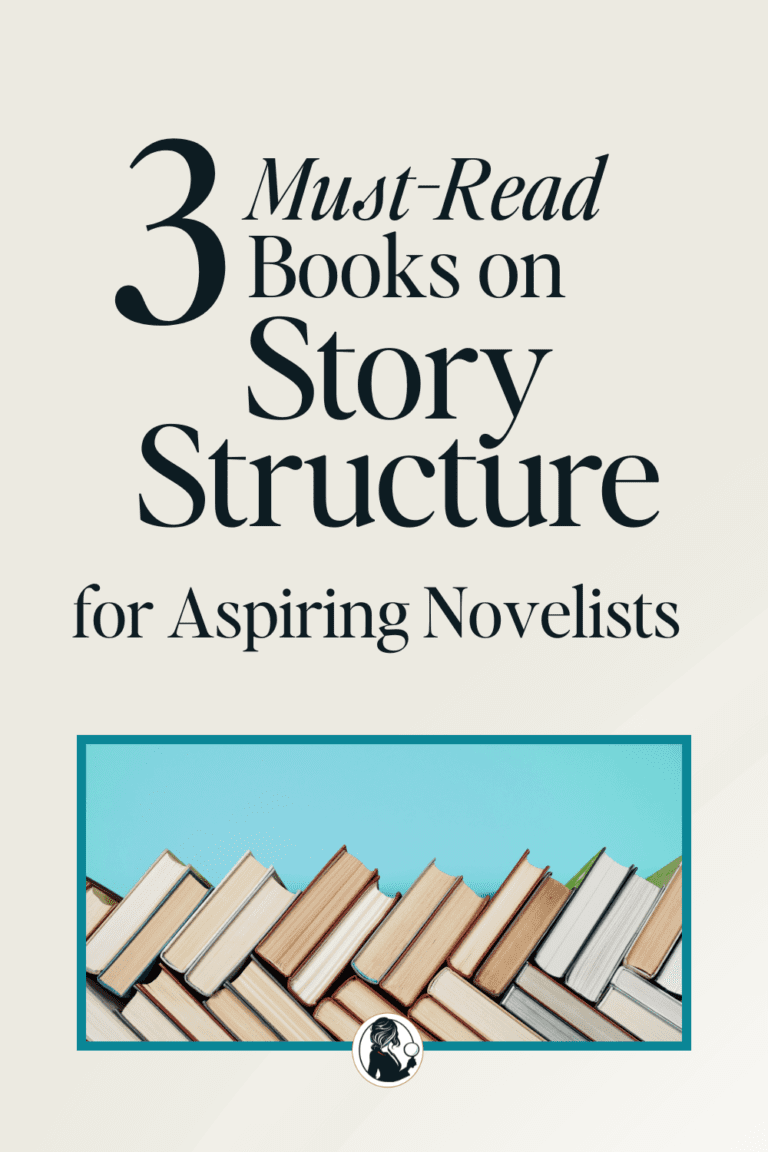
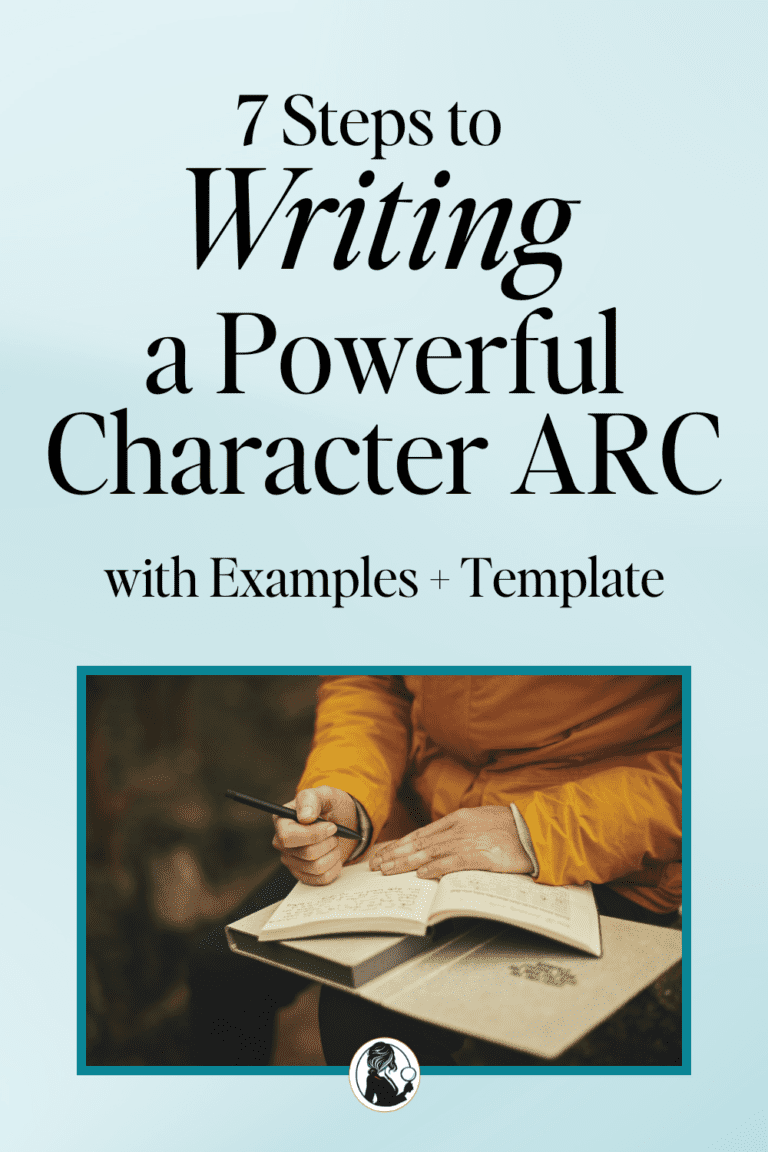
Margie’s workshop are wonderful and intense. What a great teacher and, boy, does she know her stuff
Yes, Margie Lawson’s workshops are great. I’ve heard of the color coding before but haven’t seen it or taken the class. I usually write and edit on the computer so not sure how I’d do with hard copy. Guess I color code with Word. Has anyone else done it?
I’ve taken this particular class and found it invaluable!
I’ve taken a weekend course from Margie and I also have her packets. I’ve learned SO much from her. I don’t like to print oodles of stuff, so I try to wait until I’m pretty far along in the process to do this. Sounds crazy, right? I did try to do it on the computer at one point, but highlighting and underlining in a word doc is time and labor intensive. Plus, I never could figure out how to add those oh-so-important orange dots, dashes, and lines. 🙂 I quickly ended that “EDITS on the computer” experiment. 🙂
I’m intrigued. I’ve heard of Margie class but have not yet taken it. Would you say downloading the packets is a good start or go right into the class?
Jeannie – this workshop is next for me. I took the “Empowering Character Emotions” class and it was amazing. Still – all those colors look daunting!
I’ve taken all of Margie’s classes. Any time anyone asks me how to become a better writer, I say MargieLawson.com. 🙂 This class in particular I took four or five years ago and is the single biggest reason I’m published and a better writer to boot. After years of using the color system, I now think in colors when I’m first drafting. And after years of using this system, I still come up short in green – my weakness – setting details. I still print the pages and do like Jeannie does. But I have several other writers I know that use Word capabilities and highlight on the screen. I guess it’s what works for you. I added purple to highlight character movement. That helps me see when I’ve had them standing in one place to long or nobody moving and breathing. The only problem I had was I never got her way of doing orange. I could not assess my tension that way. I finally adapted her version and use orange to highlight my power, action verbs. You know the ones: -ed oriented, action words that avoid the cliched, overused ones, i.e., punched instead of hit. It quickly points out was, is, have beens, common words and those kill tension. I love this technique and no matter how you learn it – website packet or class – GO FOR IT! It will make you a better writer.
Hello, Jeannie! Long time no see. 🙂 I’ve taken Margie’s course and it was extremely helpful. Funny, but I just mentioned you on a blog today! I was on Romance Writers Behaving Badly https://tinyurl.com/romwbb talking about creating Marketing for Romance Writers and said how influential you were in putting together our newsletter. Next thing I see is your name on Facebook mentioning Margie’s color coding. Had to stop by and say hello.
I don’t print mine, but use the online portion. I just change the text color rather than highlight. It’s easier once I’m finished to highlight the entire thing and set the text color back to automatic. But before I do that, I save the original with the colors. Odd, but I have the same issue with orange. Never did like that color anyway. LOL 🙂 I do like the idea of using purple for character movement. That would be a good way to make sure you don’t have them sitting on a couch on p 3 and in an elevator on p 9 without some kind of transition. Awesome tip.
Just saw your picture of colorful pages on the front page of Margie’s new website!